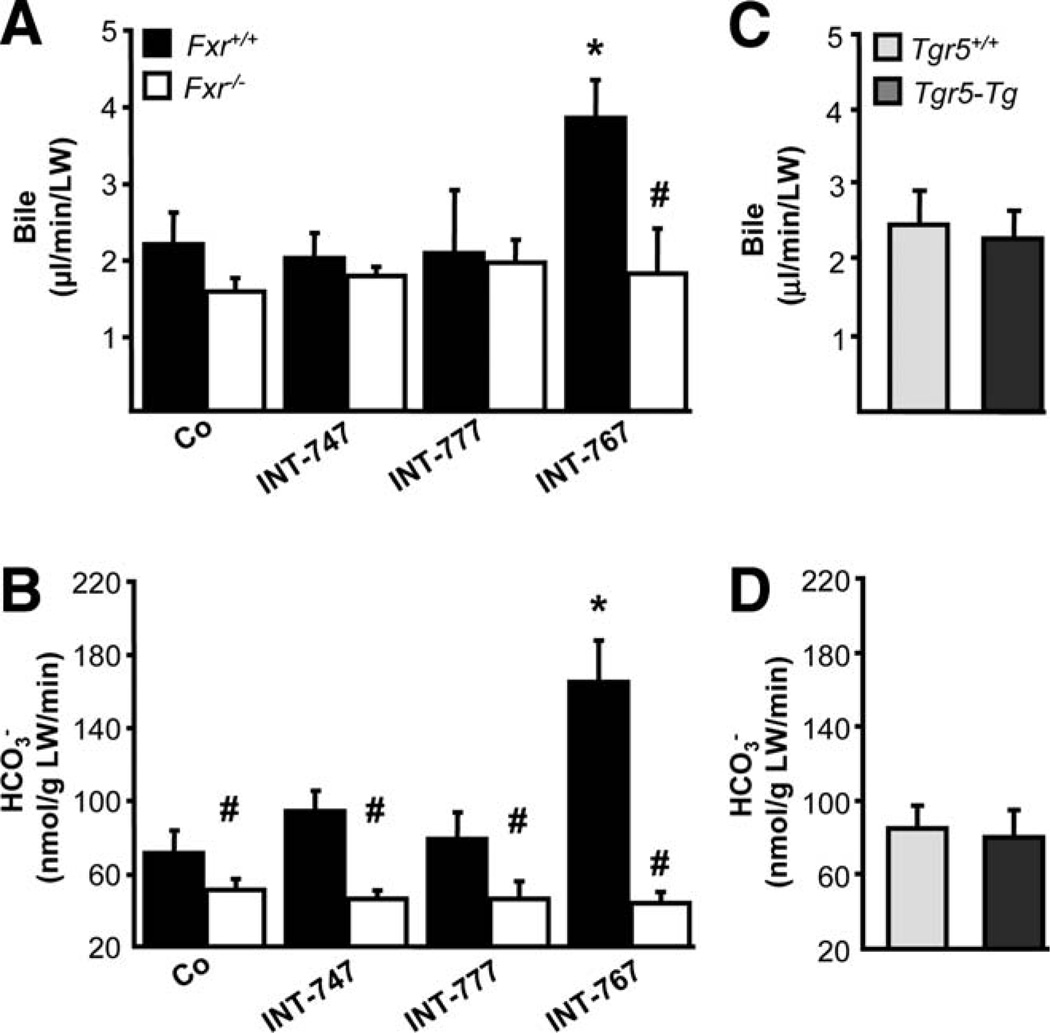Fig. 5.
Induction of -rich choleresis by INT-767 depends on Fxr, but not Tgr5. Bile flow and biliary output were measured in Fxr+/+ and Fxr−/− mice after 7 days of feeding on a chow or INT-747-, INT-777-, or INT-767-supplemented diet. (A) INT-767 induced bile flow only in Fxr+/+ mice, whereas INT-747 and INT-777 did not change bile flow in both Fxr+/+ and Fxr−/− mice. (B) Only INT-767 induced biliary output in Fxr+/+, but not in Fxr−/−, mice. Means of 4–5 mice/group ± SD are presented. *P < 0.05 INT-767-fed versus chow-fed Fxr+/+ mice (Co). #P < 0.05 Fxr−/− versus Fxr+/+ mice. Bile flow (C) and biliary (D) output were measured in age-matched Tgr5-Tg and Tgr5+/+ female mice. Bile flow, as well as biliary output, was undistinguishable between Tgr5-Tg and Tgr5+/+ mice. Means of 4–5 mice/group ± SD. are presented.

